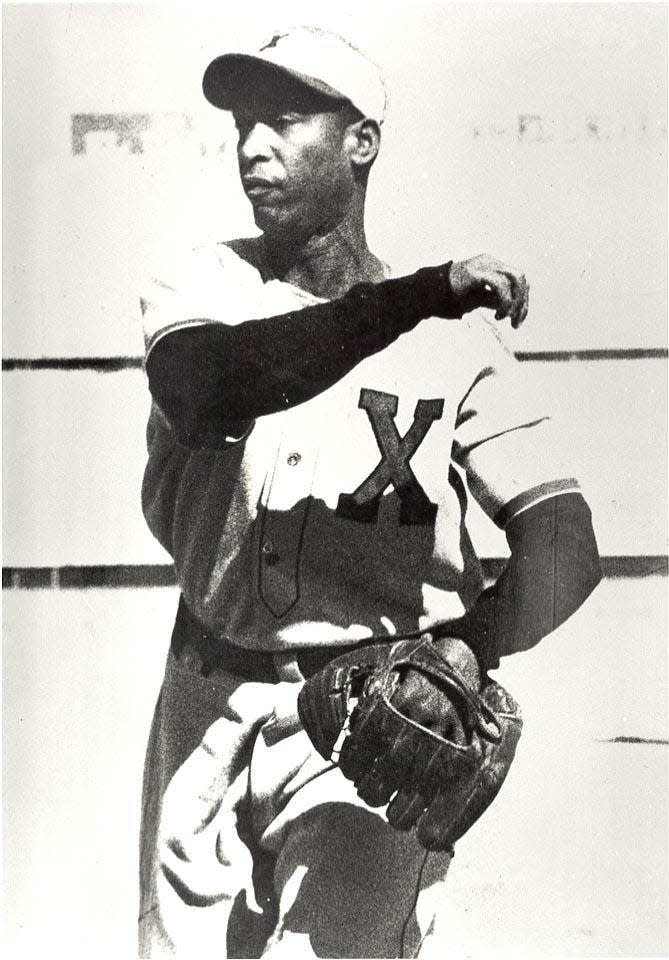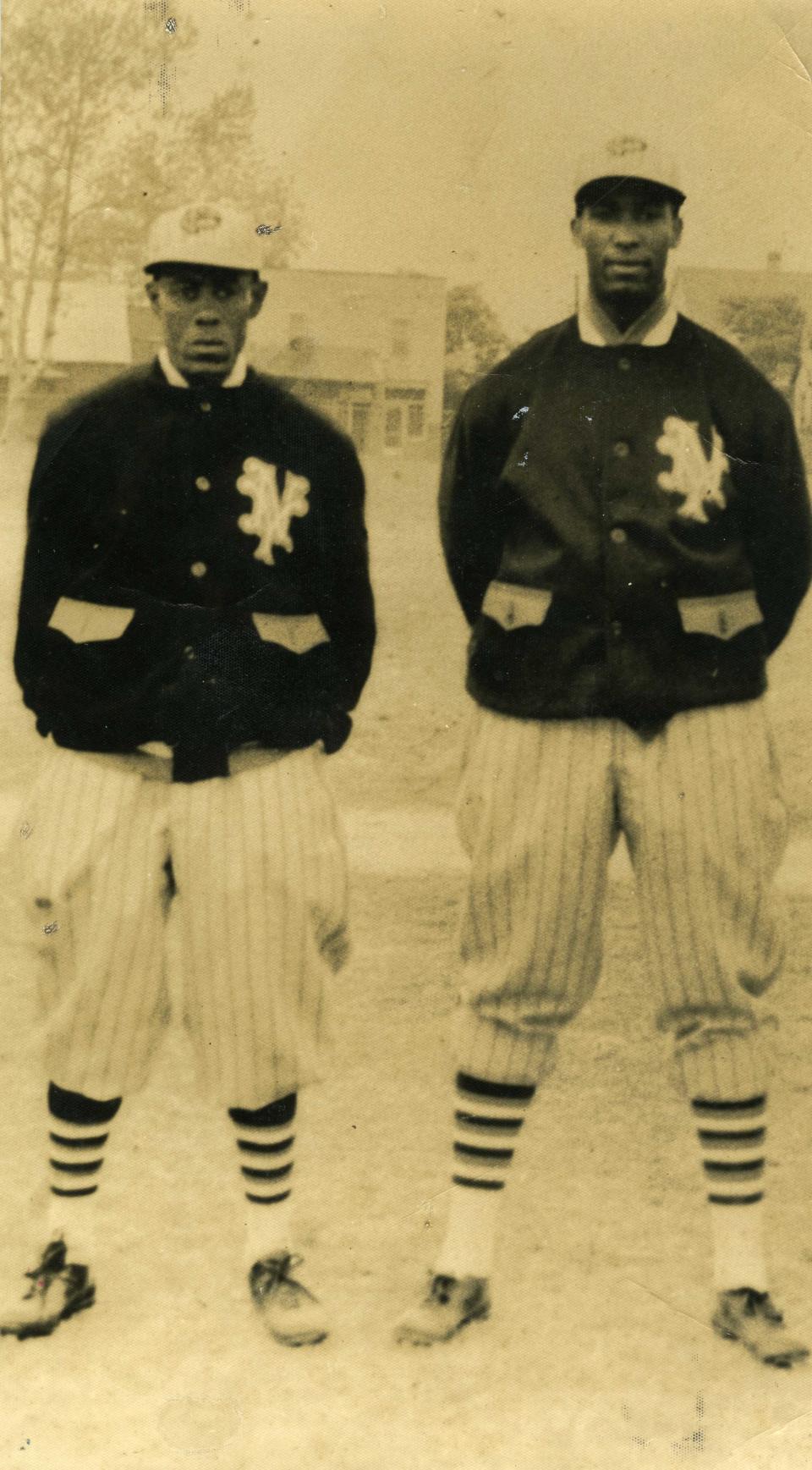'Greatest all-around player': Martín Dihigo was Shohei Ohtani decades before Angels' MVP candidate
- Oops!Something went wrong.Please try again later.
- Oops!Something went wrong.Please try again later.
Having outlasted his counterpart on the mound in the September heat, the right-handed hurler stepped to the plate in the ninth inning, the score knotted at 1-1.
With a smooth swing, he drove the ball over the distant center-field wall for a walk-off home run.
You could be excused if you thought this might be a description of Los Angeles Angels two-way star Shohei Ohtani's most recent outing.
Instead, these events happened in 1938 ... in Mexico.
The pitcher who bowed after eight innings was future Hall of Famer Satchel Paige, and the one who delivered the other sparkling pitching performance, as well as the last-inning heroics, was future Hall of Famer Martín Dihigo, perhaps the most versatile — if least known great player — in baseball history.
Dihigo was Ohtani decades before Ohtani — and more.
"The beautiful thing about the success that Shohei Ohtani has had over the last couple of years is that it has turned a bright light to the great two-way stars of the Negro leagues," Bob Kendrick, president of the Negro Leagues Baseball Museum in Kansas City, told USA TODAY Sports. "Martín Dihigo takes this whole two-way notion to an entirely other level because you can make the case that Martín Dihigo was the most versatile baseball player in the history of our sport."

A dominant pitcher who regularly played every position except catcher, Dihigo displayed great range in the middle infield and an outfield arm that opponents said would have rivaled that of Hall of Famer Roberto Clemente.
STAY UP-TO-DATE: Subscribe to our Sports newsletter now!
"Dihigo was one of the greatest I ever saw," Hall of Fame catcher Roy Campanella said in 1977. "He was a tremendous hitter, had great power, could hit for average, everything. I played against him in the Cuban winter league, in Mexico and in the Negro leagues when he was with the New York Cubans."
A star in Negro leagues, Mexico, Caribbean
But Campanella never faced Dihigo in the majors, where the Black, Cuban-born Dihigo was barred from playing. He last played in Cuba the year Jackie Robinson broke baseball's color barrier.
Instead, Dihigo plied his trade in the Negro leagues (retroactively accorded major-league status in 2020), the Mexican League and winter leagues in Cuba, Venezuela and the Dominican Republic.
In the Negro leagues, Dihigo played for the Cuban Stars, Homestead Grays, Hilldale Giants, Baltimore Black Sox and New York Cubans.
"He was the greatest all-around player I know," Hall of Famer and Negro leagues star Buck Leonard once told baseball historian and author John Holway. "I'd say he was the best ballplayer of all time, black or white. He could do it all. He is my ideal ballplayer, makes no difference what race either. If he's not the greatest, I don't know who is. You take your Ruths, Cobbs and DiMaggios. Give me Dihigo and I bet I'd beat you almost every time."
Kendrick said Leonard's assessment of Dihigo was "not hyperbole. Leonard was not the kind of player who would throw out praise just for the sake of throwing out praise. I think he sincerely believed that. Or, as my friend, the late, great (Hall of Famer) Monte Irvin would describe, Martín Dihigo was a 'beautiful ballplayer.' He was a generational kind of athlete."
Dihigo threw no-hitters in three countries: Mexico, Venezuela and Puerto Rico. He was inducted into the National Baseball Hall of Fame in 1977, by vote of a special Negro leagues committee, becoming the only player to achieve Hall of Fame enshrinement in at least four countries: the U.S., Cuba, Mexico and the Dominican Republic. And he was a four-time MVP in his native Cuba's winter league.
Vying for his second American League MVP award in two seasons, Ohtani this season became the first player in major league history to hit 30 home runs and record 10 pitching wins in the same season. His 2022 campaign — .270, 34 home runs and 92 RBI to go along with a 14-8 record, 2.47 ERA and 203 strikeouts as a pitcher (through Sept. 24) — shows 2021 was no fluke. Last season, Ohtani batted .257 with 46 homers, 100 RBI and recording a 9-2 record with a 3.18 ERA and 156 strikeouts.
Ohtani has drawn comparisons most often to Babe Ruth, but Kendrick said Negro leagues players such as Dihigo would be more accurate comparisons.
Save for the 1918 and 1919 seasons, Ruth almost exclusively was a pitcher his six seasons with the Boston Red Sox before becoming exclusively a position player with the New York Yankees in 1920. And when he's not pitching, Ohtani, 28, has been almost exclusively a designated hitter, playing just seven games — six in right field and one in left in 2021 — in the field.

Dihigo, however, displayed his versatility on the mound, at the plate and in the field throughout his career, like many Negro leaguers, such as "Bullet" Rogan, Leon Day, Hilton Smith, Ted "Double Duty" Radcliffe.
"The Negro leagues, as I remind people, were really chock-filled with two-way stars, primarily out of necessity," Kendrick said. "Their roster sizes just simply were not as large as Major League Baseball's rosters, so there was no way you could carry a four- or five-man pitching rotation, and that's all they did. So, you had to have those great athletes, who were capable of filling multiple roles, which is why you saw so many great two-way stars in the Negro leagues."
Seamheads.com credits Dihigo with playing at least 235 innings each at first base (591 innings), second base (235), shortstop (853), third base (526⅓), left field (281⅔), center field (490⅓) and right field (391⅓) in a playing career that spanned from 1923 to 1947 with various Negro league, Mexican League and winter ball teams. Seamheads also credits Dihigo with pitching 923 innings. He only played six innings as a catcher.
"He wasn't just a two-way star because he pitched, but he played multiple positions," Kendrick said. "He played every position on the diamond and he excelled at it. So, it wasn't just putting him in the position just to field a position. You put him at a position and he was going to play great in whatever position you put him in."
'A name that people have never really heard'
In the aforementioned 1938 Mexican League season, Dihigo became the first player in league history to win the pitching Triple Crown with 18 wins, 184 strikeouts and a 0.92 ERA, while batting a league-leading a .387 for Veracruz.
"So, he wins the pitching title and hits .387 and won the batting title in the same season; man, that don't make any sense, now," Kendrick said with a laugh. "You're not supposed to do that."
Dihigo, who in 1937 had become the first league player to throw a no-hitter, won another Mexican League pitching Triple Crown (22-7, 211 strikeouts and 2.53 ERA) while managing Torreón to the 1942 league championship.
Known as "El Inmortal" — The Immortal, in Cuba — and "El Maestro" — The Master, in Mexico — Dihgio had a .317 career average in Mexico to go with a 119-57 Mexican League record.
Dihigo's Society for American Baseball Research biography says he had a 218-106 combined record in officially documented winter and Negro league games. He went 107-57 in 20 Cuban League seasons, including a verifiable 93-48 in his final 12 winters in Cuba. Holway, who wrote several books on the Negro leagues, credited Dihigo with batting .304 during his Cuban winter league career.
As a player or manager, Dihigo led teams to league titles in Cuba (1936 and 1937) and Mexico (1942). Dihigo even worked as an umpire in Mexico and Cuba before eventually working as an announcer and commentator for radio broadcasts of the Cuban League.
Despite his many accomplishments, Dihigo remains relatively unknown among baseball fans in the U.S.
"The American public doesn't know the trajectory of this player and he's hardly been written about in English," said Dihigo's son, Gilberto, who in 2018 self-published an English version of his book, "My Father Martin Dihigo, 'The Immortal'".
Said Kendrick: "It's great that he's being compared in a sense to Shohei because he's a name that people have never really heard. Which makes you wonder how could a ballplayer be as great as Martín Dihigo and nobody knows who the heck he is? But that's the plight of the Negro leagues."
This article originally appeared on USA TODAY: Martín Dihigo was Shohei Ohtani decades before Angels' MVP candidate

